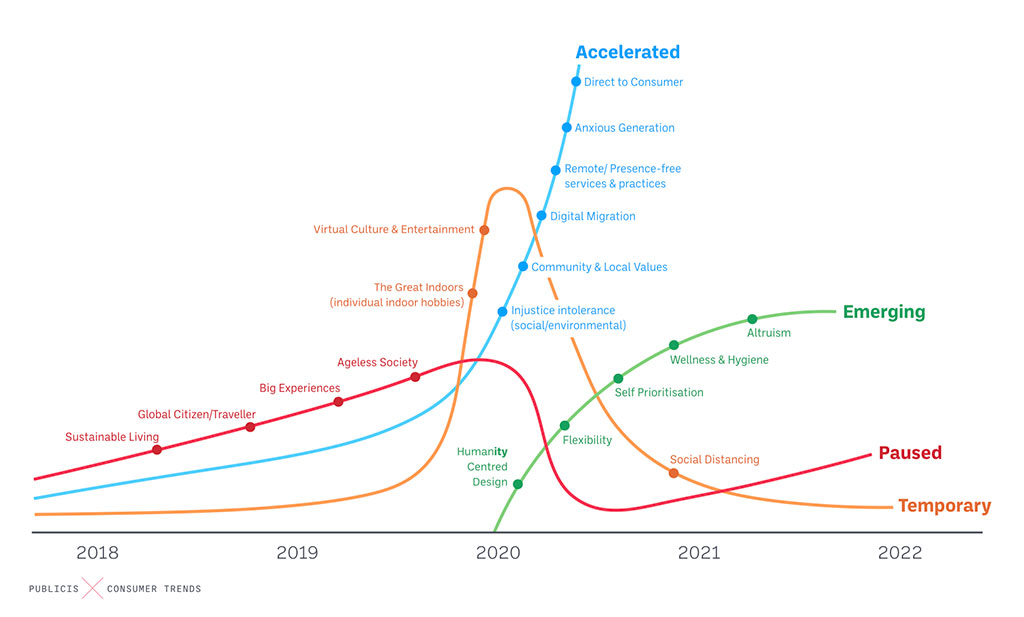
There has been much discussion about communication strategies in light of the Covid-19 pandemic; however enough credence has not been given to the implications for customer experience and the threat inertia could pose to brands, writes Amy Hore.
Brand owners who strategically adapt key moments of their customer experience and relevant aspects of their products or service propositions to match changing expectations and behaviours will emerge stronger. The opportunity is considerable, as they become a truly customer-centric business and grow brand equity accordingly.
Anyone who has savoured a gloriously creamy kerb-side pint will attest that certain customer experiences have already adapted in many, but temporary, ways. Whilst this is true, as we leave our homes and reoccupy the world, certain behaviours and expectations will sustain.
At Publicis Dublin we recommend an approach we believe is vital for brand owners to take. To not only reconsider your marketing and communications objectives and strategies. Brands owners need to revisit and redesign key moments and touchpoints that will deliver an effective and purposeful customer experience. These are key differentiators for any brand.
Revisit
The pandemic has fundamentally changed our environment enough that our habitual behaviours have been destabilised, our needs re-evaluated and our expectations altered. Some long term changes are likely. We’ve seen this before; major life events can trigger lasting changes in behaviours. Trade-offs between privacy and security were accepted post 9/11. Post WW2, what was intended as a temporary adjustment – women going to work and wearing trousers – became the new norm. (You weren’t getting those back boys).
This pandemic has, like rarely before, turned our attention to trends. It has caused some trends that were building momentum over years to become energised or accelerated; some to pause or go into decline; and some unexpected trends to emerge. Importantly, some of these will be temporary and some, like those mandatory skirts, will never be seen again.

Brand owners need to consider:
- How have accelerated, emerging or declining trends influenced my customers and what does this mean for the customer experiences, products and services we deliver?
- Which trends will be temporary and which will last?
- How specifically have behaviours, attitudes, needs changed in relation to our business?
- Are we meeting changed expectations throughout our customer journey?
- What are we not doing well enough that is important now more than ever?
- What elements are no longer relevant or are more relevant?
One key example of an accelerated trend that will affect every brand’s customer experience is the following:
Digital Fusion
The value of digital services has heightened as they have allowed us to maintain normalcy throughout the crisis. Beyond mere efficiency and safety, we have all found that is it possible to have meaningful interactions through digital services. For cohorts of customers who held on to traditional engagement with services – the pandemic has forced shift in behaviour. Similarly to how the SARS pandemic accelerated eCommerce in the APAC nations, it is highly likely that customers mass adoption to digital interactions with services will sustain and deepen.
Poor user experience (see Zoom’s astronomical win over established giants such as Microsoft Skype and Google Hangouts), anti-intuitive journeys, interactions absent in customer empathy and deficient functionality will come acutely into focus. Brands will need to fix current digital pain points, grasp opportunities for digital conversion, explore alternative remote touchpoints and learn how to deliver experiences that remain meaningful even in virtual channels.
ReDesign
It is not enough just to recognise that things have changed for customers, brand owners simply must respond now. Many businesses will discover massive transformation will be necessary, but for most it will be an opportunity to unlock more value for you and your customers.
At Publicis we know that even starting small with key moments in your customer experience can drive significant equity for your brand. To tackle the challenges and changes your brand faces, we suggest you:
- Prioritise the key moments across your customer journey where you can affect change quickly.
- Reimagine the roll each touchpoint should play and explore creative solutions.
- Explore whether new occasions exist where your products and services can add value.
- Test, learn and redesign with vigour and creativity.
Although Covid-19 has thrown up a rush of challenges and changes itself it should not divert us from sustainable and inclusive customer experience goals. As more seismic events rock 2020 it’s important to remember that we should continually revisit the evolving and often underserved needs, behaviours and expectations of all our customers and redesign accordingly.
Looking ahead strategic thinking, design and creativity will be instrumental in how organisations redesign for success. Imaginative ways are needed to reignite our economy. Design will be necessary for new processes, ways of working, ways of doing, buying, meeting, eating, travelling, socialising. Creative solutions will be needed for urgent problems as well as strategic opportunities. At Publicis Dublin, we firmly believe that brands are built on both storytelling and customer experience, and now it is more important than ever to pay attention to both.
Amy Hore is a s senior service designer with Publicis Dublin




















